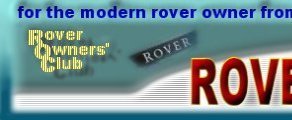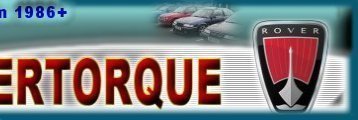  |
| ROVER |
. History of the Badges. |
MG |
(Part1) History of the Rover Badge
The Rover mascot began its life as an innocent pun on the most famous rovers of all - the Vikings. As the word 'Rover' means 'wanderer' or 'seafarer', a Viking mascot was considered apt for the Rover company.
Mascots were popular accessories and Rover embraced the Viking.
A shield was the most convenient shape to be placed on the front upright of a bicycle and from 1902, a motorcycle.
The radiator shape evolved from a shield to a rectangle, with the 12 hp in 1912. And in 1922, owners were offered a mascot for the radiator filler cap as an optional extra for one pound.
The 1920's saw the adoption of the helmeted Viking and the triangular badge that intrigued generations of owners of Rover vehicles.
Rover's upstanding Viking gave way in due course to his head alone, still with helmet. Logically, this gave way to the figurehead of a Viking Longship.
The Viking Ship prow and sail first appeared on a radiator badge in 1929 and evolved symbolically throughout Rover's history.
First to wear the Viking head mascot and the enamel badge of the black longship ploughing through blue seas was a two-litre saloon in 1930. One of these, a Light Six, carried the distinctive badge when it raced the Blue Train through France.
A moderately shameless stunt by Dudley Noble, safe in the knowledge that the average speed of the famous express was no more than about 40 mph once all its stops and detours were taken into account. To beat it, Noble had to more-or-less drive non-stop from Calais to the Riviera.
The biggest Rover Viking badge appeared on the Rover 2000 of 1963, at the centrepiece of its grille.
(Part2) History of the MG badge
William Morris could be considered one of the founding fathers of the British motor industry. Beginning his career in Oxford in the 1890's as a cycle mechanic, he later branched out into the new motor trade and by 1910 had established himself as the proprietor of the Morris Garages, Oxford's leading car dealer. Three years later he was to fulfil his ambition of becoming a motor manufacturer when the first Morris car went into production at Cowley, near Oxford.
With Morris' time and energy being devoted to car manufacture, his original business was entrusted to a general manager. In 1922, Cecil Kimber (1888 - 1945) was appointed to this post. Kimber was a car enthusiast who had already worked for several companies in the motor industry. He was particularly keen on sports cars and had considerable design flair, producing eye catching body styles.
It was Kimber's idea to begin to produce a line of special bodied cars on the Morris chassis. As he said later, he saw a niche for a car that was 10 per cent better than the standard product but would sell at a fifity per cent higher price.
Determined to emphasise that his cars were more than just revamped Morrises, Kimber showered these MGs with Octagon motifs; oval instruments gave way to Octagonal ones.
It was thought that the Octagon symbolised the enthusiastic loyalty customers had to their chosen marque. This magic began to weave its spell on generations of true motoring enthusiasts. In addition, motorsports activities rapidly elevated the fame and prestige of the MG marque.
The famous enamelled Octagon MG badge was embraced by the international public when MG won its first international motor race in Argentina in the heady days of the 1920's. The winning car was a 14/40 four-seater, which averaged 62mph in the hands of Alberto Sanchiz Cires.
The attractive octagonal badge quickly became a true mark of distinction and the company was not slow to appreciate that customers enjoyed showing off the MG presence. Thus followed the tradition of using the octagonal badge or simply the octagonal shape, for any number of ingenious applications around the vehicle. Bystanders, passengers and mechanices were never left in any doubt as to the origins of these charistmatic cars. Octagons were cast into the aluminium toe-board and the accelerator, MG hubcaps replaced the standard Morris ones and even the tool-box carried the MG symbol. Enthusiasts entered into the spirit of the idea and still write things like "Octagonally yours" to sign off letters.
The MG octagon is one of the world's most popular sports car marques, associated with a history of countless track winners, record breakers and classic road cars.
|
|
Copyright: Text MG-Rover website. Layout CopyWright MMIII
|
THE
Club for ALL Modern Rover Owners . . . . |